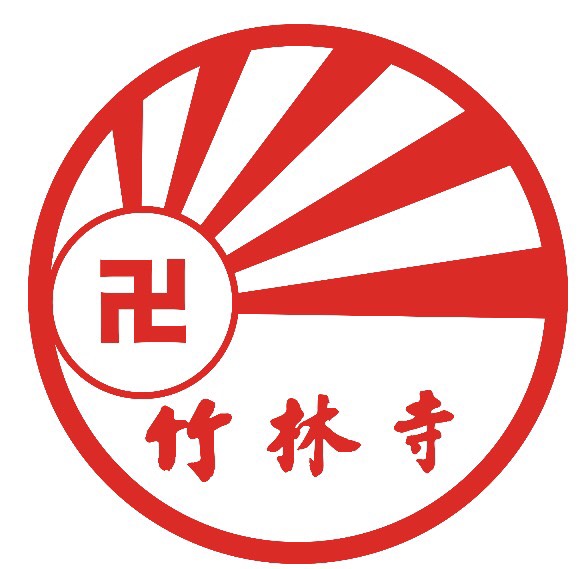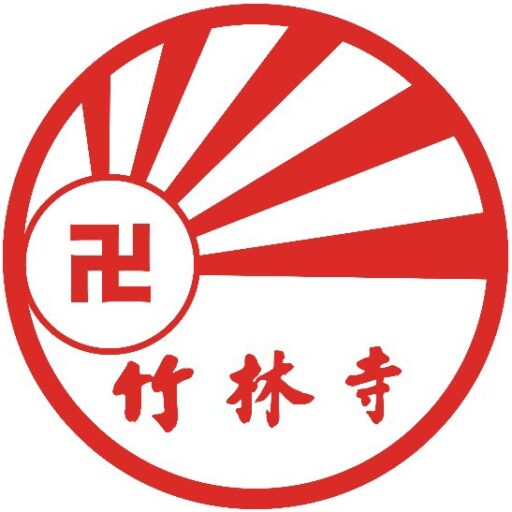
竹林寺缘起–十方善信,齐力建寺
The name “Zu-Lin Temple” (Bamboo Grove Temple) is a reference to the Purple Bamboo Grove in Guan Yin Bodhisattva’s Mount Putuo. The temple began as a house temple in Block 216 Boon Lay Way, where Mdm. Xu Guiyang enshrined a statue of Guan Yin Bodhisattva and provided spirit medium services. The spirit medium was said to be very effective and attracted many devotees. Mdm. Xu and other devotees hoped to build a temple in Western Singapore, so as to propagate Buddhism and allow people to worship the compassionate Guanyin Bodhisattva.
- 13 April 1982 – Zu-Lin Shrine is established. Fundraising begins
- 23 May 1989 – Zu-Lin Temple is officially recognised as a Buddhist organisation and permission is granted to build a temple which would be renamed Zu-Lin Temple. In that same year, the Singapore Buddhist Federation approved Zu-Lin Temple’s membership.
竹林寺之名,源于观世音菩萨南海普陀山道场的一片紫竹林,本寺前身为竹林坛。1980年,居于文礼道第216座的许桂阳女士在组屋单位内供奉观世音菩萨像,同时也提供乩童占卦问卜服务,由于十分灵验,吸引众多信众前来膜拜。她与信众们希望能在我国西部建立一座佛寺,让人熏习佛法,供拜大慈大悲、救苦救难的观世音菩萨,因此兴起为菩萨建寺的念头。
- 1982年4月13日,竹林坛成立,开始募捐建寺基金。
- 1989年5月23日,竹林坛正式获得社团注册局批准为佛教团体,可建立寺院,因而更名为竹林寺。同年,新加坡佛教总会批准竹林寺成为正式会员。

Upon registration, the first batch of the executive committee was chaired by Mr Lin Chengfu who was a well-known businessman. The advisor was Senior Parliamentary Secretary for the Ministry of Environment and Member of Parliament for Jurong Professor Ho Kah Leong. With the hard work of Chairman Lin and the committee as well as the sincere assistance of Professor Ho, fundraising activities were very proactive and so were efforts to find a suitable location for the temple’s location.
- March 1993 – Zu-Lin Temple moved to Jurong West Street 71 and was temporarily located in an air raid shelter.
- 31 March 1994 – Zu-Lin Temple placed a successful bid for a location at Bukit Batok West Avenue 5. The Iot size is approx. 21,350 square feet.
This land was leased for thirty years. After the successful bid, the government requested for a payment of $SGD 3.08 million within a week. At that time, the temple only had $SGD 500,000. Faced with such an unexpected request, the management requested committee members to take a loan from the council but their efforts were insufficient.
获准注册后,竹林寺第一届管委会主席为当时商界闻人林成福居士,首席顾问是时任我国环境发展部高级政务次长兼裕廊区国会议员何家良博士。在林主席和管委会同仁的不懈努力以及何博士的竭诚帮助下,筹募建寺基金的活动积极开展,大家都落力寻找适合建寺的地点。
- 1993年3月,竹林寺迁入裕廊西71街,以地下防空壕作为临时道场。
- 1994年3月31日,竹林寺标得位于武吉巴督西第五道的地段,面积为21,530平方尺。
这块地皮的使用期限为30年。得标后,当局要求竹林寺在七天内还清308万新元的款项,而当时本寺资金仅为50万新元。面对突如其来的要求,管理层立刻召开管理委员会向理事商借款项,但却是杯水车薪,难以达标。
Fortunately, a Malaysian lawyer Mdm Lin Ling Ling generously came to the temple’s assistance and a crisis was averted. According to Lawyer Lin, one night she dreamt that Guan Yin Bodhisattva invited her to a vegetarian meal. Upon reading the papers the next day, she saw that Zu-Lin Temple was raising funds and she immediately understood the meaning of her dream. She donated $SGD250,000 and made a follow up donation of $SGD4,750,000. Her total donations exceeded $SGD 5,000,000. Her contribution to the temple is indeed significant. In view of her immeasurable merit, Lawyer Lin was bestowed the post of Permanent Honorary Chairperson.
During the construction of the temple, Zu-Lin Temple raised funds in three different ways/target audience:
- Auctions, charity fairs, distribution of vouchers and forging positive relations with the public.
- Requesting donations from well-known persons
- Recruiting devotees passionate about promoting Buddhism to participate in symbolic consecrations of the land, worshiping the bodhisattvas and making donations to various facilities.
所幸皇天不负有心人,竹林寺有缘获得来自邻国的林玲玲律师慷慨解囊,终于顺利度过此次危机。根据她忆述,她夜间做一奇梦,梦见观音菩萨请她吃斋。隔天一早起来读报,竟看到竹林寺正在筹款建寺的新闻;她深有启发,立刻到竹林寺捐了25万新元,随后更陆续补上475万新元,总捐款额高达500万新元。林玲玲律师可谓竹林寺的建寺大功臣。感念于其无量的功德与善心,她也获颁授为竹林寺的唯一永久荣誉主席。
在建寺过程中,竹林寺的筹款以三种不同形式和对象进行划分:
- 以各种较专业的拍卖、义卖、发行彩券等,向社会各界广结善缘,呼吁共襄盛举;
- 向社会知名人士和团体募捐;
- 征寻热衷于弘扬佛法的信众,象征性献地或供养菩萨、捐赠各种大型设施。
On the afternoon of 1 January 1996, management, monastics and lay-devotees gathered to witness the earth moving ceremony and opened a new chapter in the temple history.
At that time, Zu-Lin Temple was a modern Dharma propagation facility, capable of multiple purposes. It had a 12 feet statue of Guan Yin Bodhisattva from which water could be dripped into the fountain, a lecture theatre with up-to-date facilities for Dharma talks and spiritual cultivation. On 24 march 2000 (Guan Yin’s birthday according to the lunar calendar), the temple organised a consecration ceremony for the Buddha statues and a Hua Yen Dharma Assembly that lasted for twenty-one days. For the next thirty years, countless devotees came to pay homage at temple during Vesak Day and other important occasions. As there were insufficient Dharma classes to meet the increasing demand, plans were made to rebuild the temple.
1996年1月1日上午十时,竹林寺在知名领导、法师和各界社会贤达、众多善信等的共同见证下举行动土仪式,殊胜庄严,掀开建寺序幕。
当时的竹林寺是一座彰显现代化色彩的多功能弘法道场,包括一尊高达12公尺的户外滴水观音菩萨像,以及设有先进设备的地下讲堂以供讲经说法和共修等用途。竹林寺在2000年3月24日,农历庚辰年二月十九观音圣诞之际, 举行开幕及佛像开光大典,并举办 21天的华严法会。此后三十载的岁月里,竹林寺香火鼎盛,信众络绎不绝,每逢佛诞日和各种佳节庆典时,寺院内都是人山人海,热闹非凡,却也显得挤迫。另外,因学生人数倍增但佛学课室却不敷使用, 本寺当务之急是妥善规划以重新修建寺庙。
The Road to Reconstruction: Overcoming Crises
风雨重建路–否极泰来,遇难呈祥
After much discussion, the management committee decided to build an even larger temple on the original venue and permission for rebuilding was granted by the government in April 2016. The whole project required over $SGD 20,000,000. Fortunately, the temple received much support from devotees and well-wishers who pitched in to donate tiles, wooden brackets, lotus windows, architectural arches, wall carvings, umbrellas, flower decorations, Guan Yin carvings. The warm-hearted support of the public made the temple’s reconstruction possible.
The reconstruction project lasted for five years and un-went various challenges and crises. The application for demolition took half a year. The project was also delayed when the reconstruction did not fit the blueprint and the contractor in charge of making changes to the temple’s exterior took a long time to make progress. Covid-19 caused a further delay due to shortages of manpower and materials. But under the united efforts of the management committee, the labours of the craftsmen who worked overtime and the support of many devotees who continued with fund-raising, the reconstruction project was able to avert misfortune and successfully completed in 2021.
经过多次研讨,管委会最终决定在旧地重建扩大,并在获得政府部门批准后于2016年4月开始重建。整体工程项目预计耗资两千多万新元,所幸获得了广大信众和寺友们的纷纷响应,包括认捐屋瓦、斗拱、莲花窗、牌楼、围墙雕、宝盖莲蓬、观音背雕、宝盖花瓣等。新寺也在大家一砖一瓦的热心奉献下,开启了重建之路。
这项历时五年的重建工程可谓一波三折。首先是申请批准进行爆破拆除方面就花了超过半年时间,后因工程与绘图不符,加之负责修改外观的承包商的缓慢进度而有所耽误。新冠疫情(Covid 19)的阻断措施也让情况雪上加霜;建材和人手短缺,再再拖延了工程的进度,可谓艰难险阻。但在理事会成员们的齐心协力以及匠师们的加班加点、苦干实干下,承蒙十方居士的鼎力相助、奔走呼吁、多方筹措和虔诚护持,历经数年的重建才能屡屡雨过天晴、遇难呈祥,并终于在2021年大功告成。
Traditional Buddhist Culture: Ancient Exterior With A Golden Core
传统寺庙风–古色外观,金属内核
The temple’s leadership has spent much time and effort deliberating over many choices before settling on a design which uniquely combines new techniques and materials which were completed by artisans from China who were experienced in temple architecture and had participated in the construction of Mazu temples in Japan.
Zu-Lin Temple’s traditional exterior cost SGD $3 million. Instead of tile and wood, aluminium alloy was utilised to build the frame of the doors, windows and pillars, which was unprecedented in Singapore. Golden fluorocarbon paint was use to accentuate the opulent appearance of the building. This is also to suit Singapore’s humid weather. The bracket arch which was used for balance and ornamental purposes is also made of aluminium alloy. This is for durability and ease of maintenance.
The wall of the temple (which measures 6m by 21m) depicts the compassionate activities of Guan Yin Bodhisattva. Also, to save energy and reduce our carbon emission, thew temple uses LED lights. During festive seasons, the lights will enhance the contours of the temple and signifies the eternal light of Buddhism.
The traditional exterior of the temple and the use of modern materials complement each other. This also represents smart technology, pragmatism and versatility. This reflects the progressive spirit of the temple.
在佛寺的设计风格上,寺领导花了好一段时间,在多个绘图设计中甄选斟酌,最终才确定了具有传统寺庙建筑风格的设计。其主要特点在于新技术和新材料的应用及创新,并由一群精通庙宇建设的中国师傅协力完成。这组师傅也曾参与日本妈祖庙的建设。
竹林寺的古色外层建筑共耗资300万新元,以现代化的铝合金建材打造具有传统寺庙建筑特色的外观,可谓是新加坡首例。铝合金取代传统的瓷瓦和木材,作为门窗框架和圆柱,表面加上金色氟碳漆处理,突出体现建筑富丽庄重的气势,也更适合气候潮湿的新加坡。而传统庙宇建筑用于承重和装饰的斗拱,也换成铝合金材质,不但更耐用,维修也简单。
环绕寺庙的6米乘21米浮雕围墙,诉说着观世音菩萨的慈悲事迹。此外,节能减碳也是新一代寺庙应有的标配;庙宇四周用上LED省电感应灯管照明,在华灯初上之时,绕着飞檐斗拱点缀的灯饰,勾勒出竹林寺的轮廓,诠释禅灯永亮的意象。
古色氛围与现代金属建材的相得益彰,不但彰显当代寺庙应有的特色,也充分实现智能化、实用化、多功能化等目的,处处展现佛寺与时俱进的精神。

